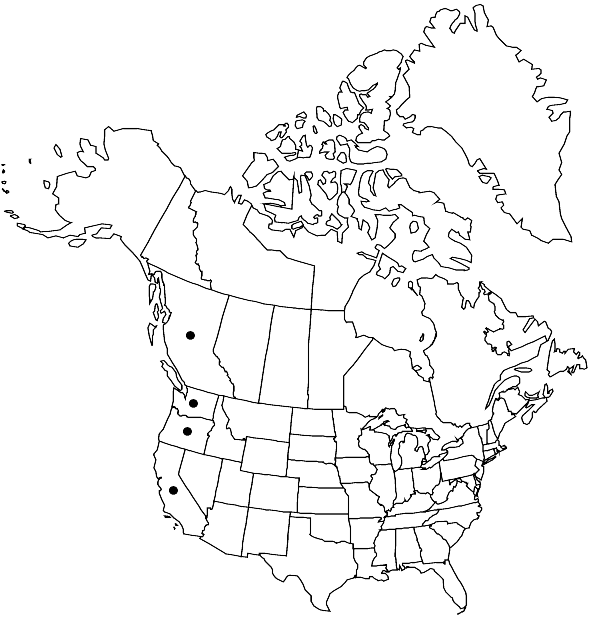Fissidens aphelotaxifolius
Bull. Torrey Bot. Club 103: 35, figs. 1–15. 1976,.
Plants to 17 × 2–3 mm. Stem branched; axillary hyaline nodules absent; central strand present. Leaves as many as 20 pairs, lorate to lanceolate, acute to rounded, apiculate, to 2.35 × 0.35–0.65 mm; dorsal lamina usually rounded proximally, ending at insertion, sometimes ending before insertion or slightly decurrent; vaginant laminae 1/2 leaf length, ± equal, minor lamina ending on or near margin; margin mostly crenulate on dorsal and ventral laminae, mostly serrulate on vaginant laminae and distally, elimbate; costa variable in length, even on same plant, excurrent into apiculus to ending several cells before apex, taxifolius-type; lamina cells 1-stratose, distinct, smooth, slightly bulging, firm-walled, quadrate to irregularly hexagonal, 6–15 µm, somewhat larger justacostally, marginal row thinner, paler. Sexual condition dioicous(?); perigonia unknown; perichaetia on short proximal stems and axillary in proximal leaves. Sporophytes, calyptra, and spores not known.
Habitat: Wet soil, humus, and rocks along streams, near waterfalls, in damp or wet crevices of cliffs
Distribution

B.C., Calif., Oreg., Wash.
Discussion
Fissidens aphelotaxifolius can be confused with F. taxifolius but is best distinguished by its smooth and slightly bulging laminal cells, distinct from the conspicuously mammillose cells in the ventral laminae of the F. taxifolius. Moreover, the plants tend to be smaller and leaf apex more coarsely serrulate than in F. taxifolius. Vegetative propagation of F. aphelotaxifolius is apparently by abundant branched, chlorophyllose filaments.
Selected References
None.